John Frusciante Rig Rundown
by Jay Sandwich
Have you ever had a moment where you listened to a guitar player, and you’re thoroughly mesmerized not just by prodigious amounts of skill and musicality, but by the graceful ease they work wonders on their guitars?
Some of these musicians play so incredibly, yet so naturally that you never feel even a hint of envy – you’re just grateful that such a being exists and you simply take the moment in.
However, due to their usually quiet natures, a lot of them go by unsung, or at least without receiving credit equal to their prodigious talent.
One such guitar player is John Frusciante of the Red Hot Chilli Peppers. We almost said formerly but John just yesterday rejoined the band for the second time, after ten years absence!
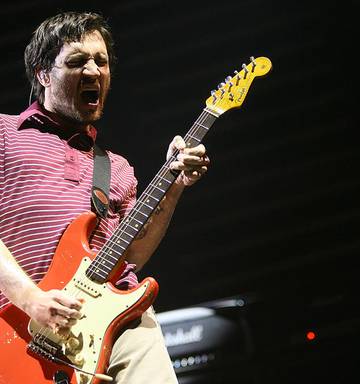
In addition to his own unobtrusive nature, the reason that John Frusciante doesn’t spring up in everybody’s minds when talking about great guitar players is that emotional response to the whole package rather than pure skill was always the driving force behind the Chili Peppers’ success, and the latter was more often than not overshadowed by the former.
However, it is undeniable that the lasting beauty of the Chili Peppers’ music was in significant part due to John’s playing, and that John always was and remains a majestic musician.
In this article, we’ll be taking a look at what gear John used to create his iconic sound, and as you’ll see, there’s quite a bit.
But first, a bit of backstory…
History with the RHCP
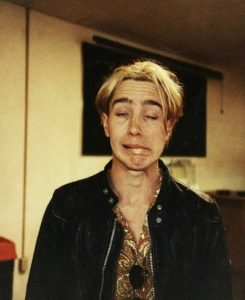
We’ll be taking a quick trip down the memory lane and talk about how John came to be an integral part of the Chili Peppers, his path to becoming the musician he is today, and how he evolved alongside the iconic band.
John Frusciante joined the Red Hot Chili Peppers back in 1988 when he was only 18 years old. In addition to his young age, he was a peculiar choice for the band that mostly focused on funk at the time, and John had no prior experience with the genre.
Of all his early influences, John said that Frank Zappa was the greatest, stating: “By the time I was 15 I owned all of the records and was spending about 70% of my musical life studying and learning his music. For me, striving for the perfection he was known for demanding from his bands was a powerful motivation and force behind the huge amount of practicing I was doing back then.”
However, back in those early days he was still pretty much just a replacement to the original guitarist Hillel Slovak and was stuck with trying to emulate his sound.
During the recording of “Mother’s Milk”, John still had very little creative freedom to speak of, as he was pressured by the producer Michael Beinhorn to play with a driving heavy metal tone, which is evident in songs like “Higher Ground”, “Knock Me Down”, which were a clear step away from the Chili Peppers’ previous sound.
By the time “Blood Sugar Sex Magik” was released, not only did John find his genuine place within the band and come into his own as a musician, but it was this iteration of Chili Peppers that introduced the band to the mainstream audiences.
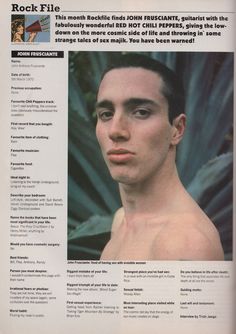
In 1993, John left the band due to it becoming “too popular” as well as personal issues and came back in 1998 after Dave Navarro’s departure.
He had matured during that time since he sounded much more articulated and in control on songs like “Scar Tissue”, “Otherside” and “Around the World” when compared to his former aloofness in playing.
On “By the Way” and “Stadium Arcadium”, John Frusciante arguably reached his full potential within the band, resulting in his tasteful and original experimentation within those albums, despite them being much more pop-oriented than the previous ones.
During his time with the Chili Peppers, John evolved into a guitarist extraordinaire – but one who emphasizes the melody and the organic quality of his playing.
Read our feature article about John’s musical life, Who is John Frusciante?
Despite his vast knowledge of music theory and enviable virtuosity, John’s prodigious qualities as a musician often went unnoticed due to his lack of interest in showing off and always putting the melody first.
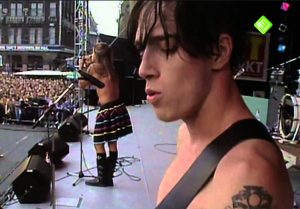
However, John achieved his seemingly simple sound with no small amount of both gear and skill. John is known to have used a staggering amount of instruments, amps, and mods, most of which aren’t officially recorded.
What follows is a rundown of gear that John confirmed to have used in various instances, and that was integral to achieving his signature elegant sound.
Guitars
Throughout his two bouts with the RHCP, John has used a plethora of guitars, and putting down a definite list would be nearly impossible to put down –some sources state that there over 40 guitars that he had used during those years.
Here, we’ll take a look at a few that he’s the best known for using, and that made the biggest impact on his sound, playing style and appearance.
Fender Stratocaster
A 1962 Tobacco Sunburst Fender Stratocaster with a rosewood fretboard, with the body scratched-up marrow-deep above the pickguard is perhaps the most famous of John’s guitars and the one that he’s associated with the most often.
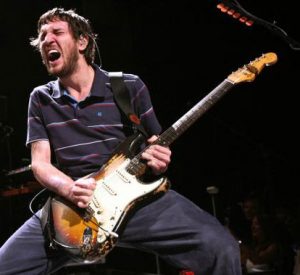
More than once, John himself has stated that this is the guitar that he is sentimental about the most, and the one that was the “most important” to him.
It was this guitar’s mellow, bright, single-coil sound that was responsible for songs such as “Scar Tissue” and “Can’t Stop”, and especially his early works with the RHCP like “Mother’s Milk”.
In fact, you’ll hear this guitar in instances of the vast majority of the songs that John played for the band.
Initially, he used stock pickups but later swapped them for Duncans which were almost the same. John also used a ’55 Strat nearly identical to this one, except for the ’55 having a maple fretboard.
Fender Telecaster
Although John is known for his love for the Stratocaster, in an interview with Vintage Guitar Magazine (you’ll notice that John has a strong preference for vintage instruments), he stated that “Around ‘By The Way’, I played Teles more than a Strat.
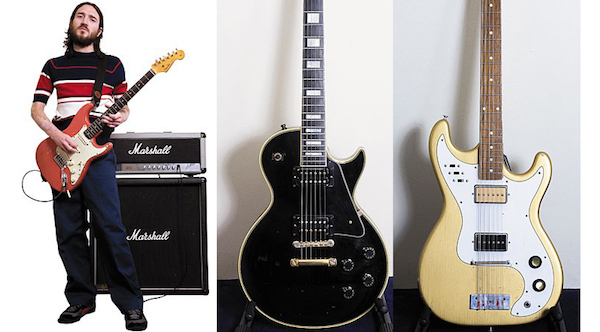
A telecaster he’s most widely known for using is a stock 1963 model with a rosewood fretboard.
If you listen to the songs from “By The Way” closely, you’ll notice that they resonate with the signature Telecaster twang.
Given that he almost never modifies his instruments, John is a living testament that you don’t need crazy mods to sound great.
Gretsch 1955 White Falcon
This is the guitar that John is seen playing during the iconic “Californication” live concert at Slane Castle from 2003.
While talking to Vintage Guitar, John said that the Gretch White Falcons are among his favorite guitars from his collection (as we’ve already mentioned, he has quite a few).
In fact, he revealed that he stumbled upon the Falcon purely by accident during a period in which he was guitar-shopping intensely because he thought his playing would change from guitar to guitar.
He said: With the white Strat, it was a neat experience because it made me play different, and made the band sound different.
If I hadn’t gone through a phase of buying, I never would have come upon the White Falcon…” The Falcon’s hollow body and Filtertron pickups give it a distinctive, rich-yet-resonant sound that clearly stands out from the Strats and Teles, and you can hear it in action on the album’s title track, as well as on “Otherside”.
Amps
Like with his guitars, John seems to like to keep things straightforward, yet elegant. However, when it comes to amps that John has been using all these years, there is even less reliable info available than for his numerous guitars.
With that in mind, we’ll take a look at the three main amplifiers that he’s been known to have used the most: Marshall Silver Jubilee, Fender Dual Showman, and The Marshall Major.
Marshall Silver Jubilee
Among guitar aficionados around the world, the Marshall Silver Jubilee amplifier is famous for its incredibly short, one-year production run and has since become tremendously difficult to obtain.
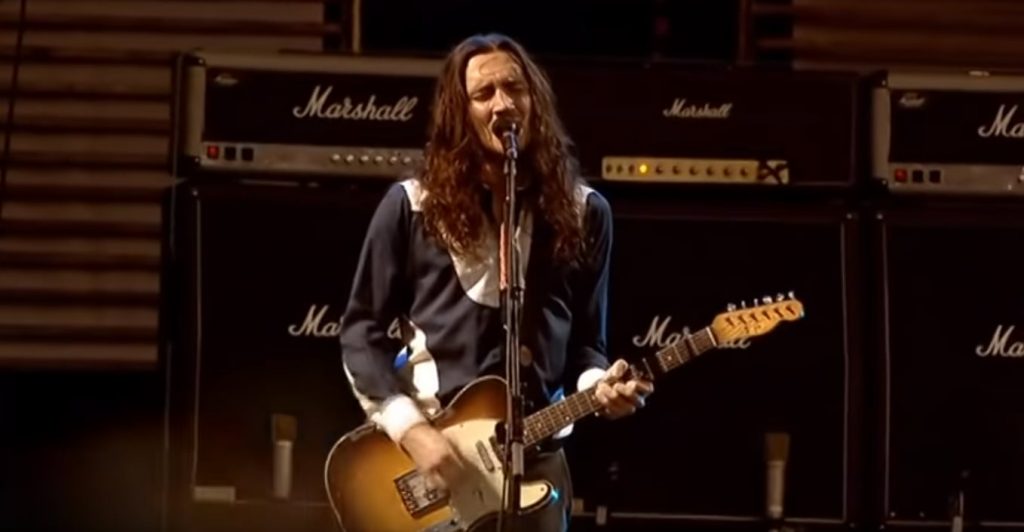
This dauntingly pricy 100-Watt amplifier is a reincarnation of the 1962 Marshall Head of sorts, and it is the obvious choice for John’s sonic output given his preference for vintage sound and instruments.
In addition to being expensive, the Marshall Silver Jubilee is known for its reliable, balanced frequency response and is powered by EL34 valves which give it a clear, ringing overall sound with a smooth top end.
Fender Dual Showman
Now this one is a strange beast in regards to the other two, as John explicitly uses it only in combination with his Gretsch 1955 White Falcon.
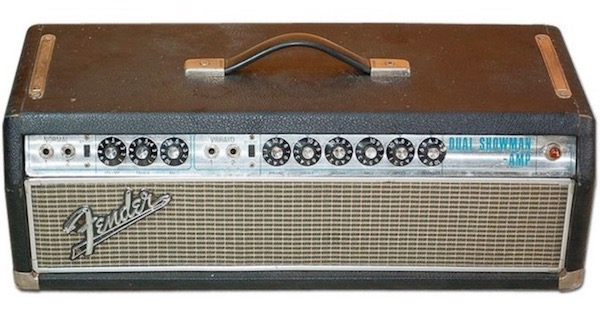
The classic Fender reverb it produces complements the White Falcon’s ringing hollow-body sound perfectly. Furthermore, the only effect that John used with this combo was a BOSS DS1 distortion pedal.
Marshall Major
Essentially, what we’re looking at here is the essence of JCM 800 in a different package and 200 Watts of power.
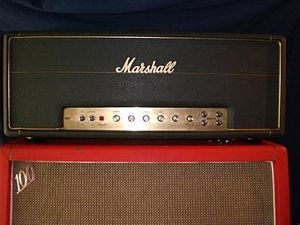
The power amp stage boasts KT88 valves, whereas the preamp contains two ECC83 and one ECC82 which pour out that creamy, controlled distortion which makes this amp so well-loved.
His on-stage combo is wrapped up by two 4×12 Marshall cabs for each of these three, making the sound of his guitar powerful enough not to be engulfed by the rest of the band.
Effects
Whether you listen to John’s gentler guitar contributions or the more hectic, funkier ones from early on, the first impression you’d get is that the man uses virtually no added effect (and that he needs none, but that’s beside the point).
However, it is now known that John actually used a wide variety of devices to further tweak his sound.
For instance, during the “Stadium Arcadium” era, he used whopping 20 different pedals for his live performances, including six Moog Moogerfooger units in addition to multiple delays, distortions, modulation, filters, and wah.
However, apart from the BOSS DS1 distortion pedal reserved exclusively for the Gretsch 1955 White Falcon, he really didn’t have a mainstay of devices that he used throughout his time with the Chili Peppers, but instead relied on intuition, current mood and desire for experimentation when deciding which effect he would keep using, and which ones he’d discard.
If one had to find a pattern behind his utilization of various effects, it would be that he had preferred effect for each of the Chili Peppers’ epochs, with both him influencing the band’s sound and vice versa.
With that said, let’s take a look at some of John’s favorite effects.
Effects
First off, we have the humble MXR Micro Amp a pedal used for boosting your main signal for solos or as a buffer for other guitars.
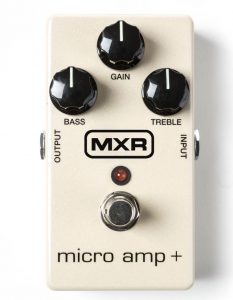
John’s grittier tones are mostly owed to the tried and true combination of BOSS DS-2 Turbo Distortion and EHX Big Muff Pi.
The BOSS DS-2 is perhaps the few mods that he used since his first day with the RHCP and continued using ever since.
In fact, this little gadget’s clipping effect is the one that can be recognized in almost every Chili Peppers’ song where John does the guitar duties.
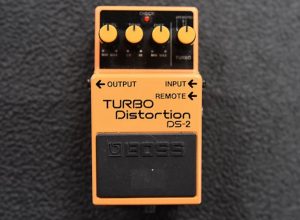
The fuzz provided by the EHX Big Muff Pi is especially characteristic of the “By The Way” era, which replaced John’s previous fuzz device, BOSS’ FZ-3, that he used more around the time “Blood Sugar Sex Magik” came out.
As far as John’s modulation is concerned, there is the BOSS CE-1 Chorus Ensemble, a simple yet reliable chorus with normal and vibrato modes.
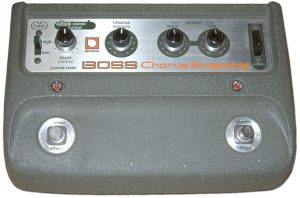
This is the other pedal that remained ever-present in his setup in addition to the DS-2.
Despite its straightforward nature (or perhaps exactly due to it), the CE-1 remains ever popular due to its ability to maintain the qualities of the original signal while complementing it with an organic sound.
The EHX Deluxe Electric Mistress is another mod that saw steady use throughout John’s career.
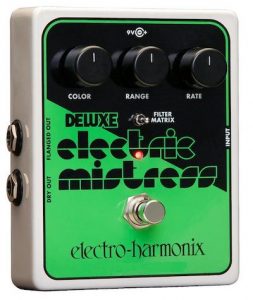
Its classic analog Flanger with its unique Filter Matrix mode disengages the auto sweep and lets you position the filter manually, and is very prominent in “By The Way”, for example.
He also uses a Line 6 FM4 Filter Modeller that comes with programmable filters and monophonic synth sounds (which replaced the Electro-Harmonix synthesizer he used during the “Californication” era).
John’s choice of time-based effects was also led by a philosophy of reliability and straightforwardness.
There’s the EHX Holy Grail Reverb, a digital reverb that like a spring one, which he used until he replaced it with Fender’s vintage tube reverb unit.
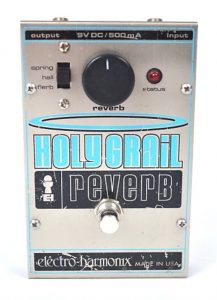
Another delay unit that John used was the LINE 6 DL4 Delay Modeller, which yields more control over delay effects than a standard digital delay, or an analog one.
Interestingly, John tends to supplement the DL4 with two DigiTech PDS 1002, which give him even more control over delay effects.
As we’ve seen, although simplicity seemingly is the key to John’s distinctive sound, there is a whole lot of thought, experimentation, and gear behind the unique and elegant sound of his guitar playing.
As such, John Frusciante truly is a living testament to the wonders that a meticulous, yet sincere love for the instrument and the simple joy of playing can bring to life.
Thanks for reading! If you have and comments or questions, leave them below!
 |
 |
 |
 |

About Jay Sandwich
Jay is an ex-shred guitar player and current modular synth noodler from a small town somewhere. Quote: “I’m a salty old sandwich with a perspective as fresh as bread.” No bull.
Leave a Reply
Musical Inspiration
Check for FREE Gifts. Or latest free acoustic guitars from our shop.
Remove Ad block to reveal all the rewards. Once done, hit a button below
 |
 |
 |
 |